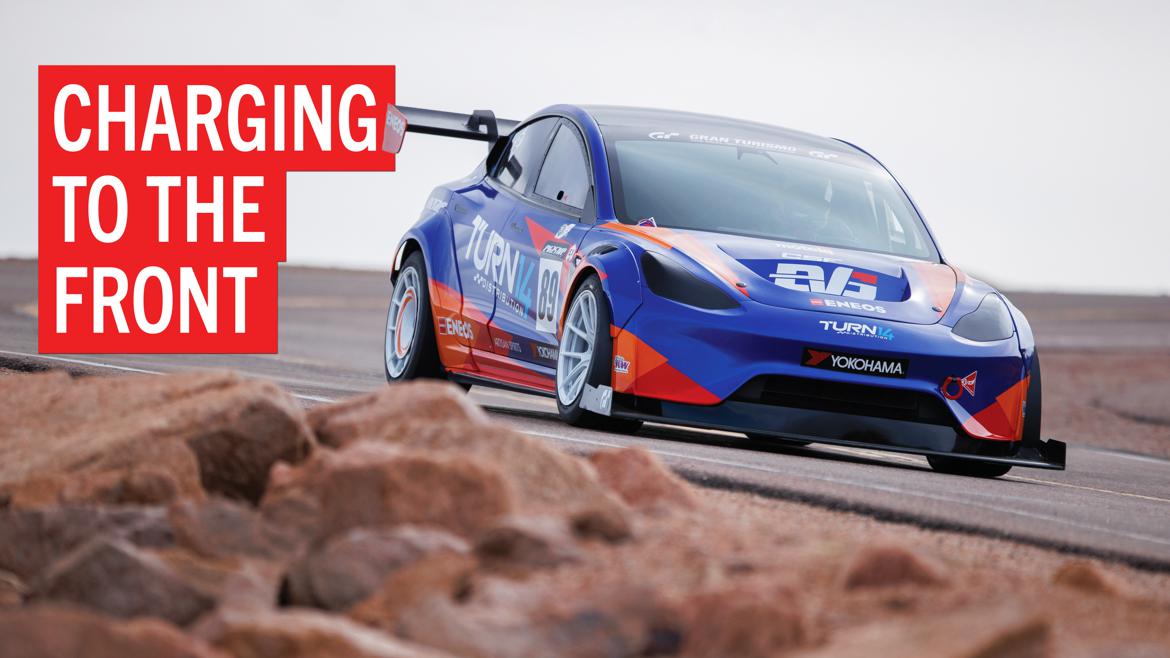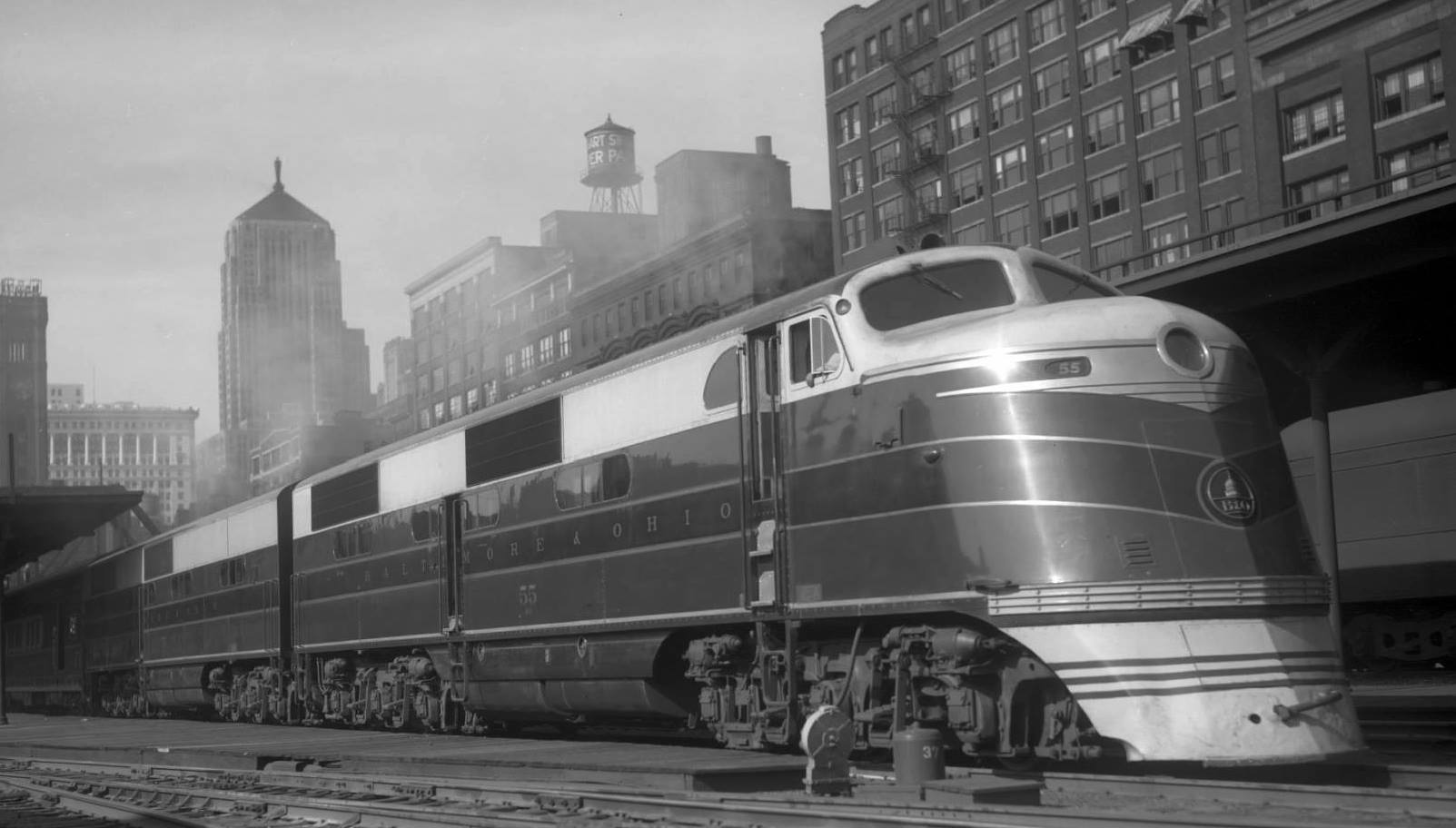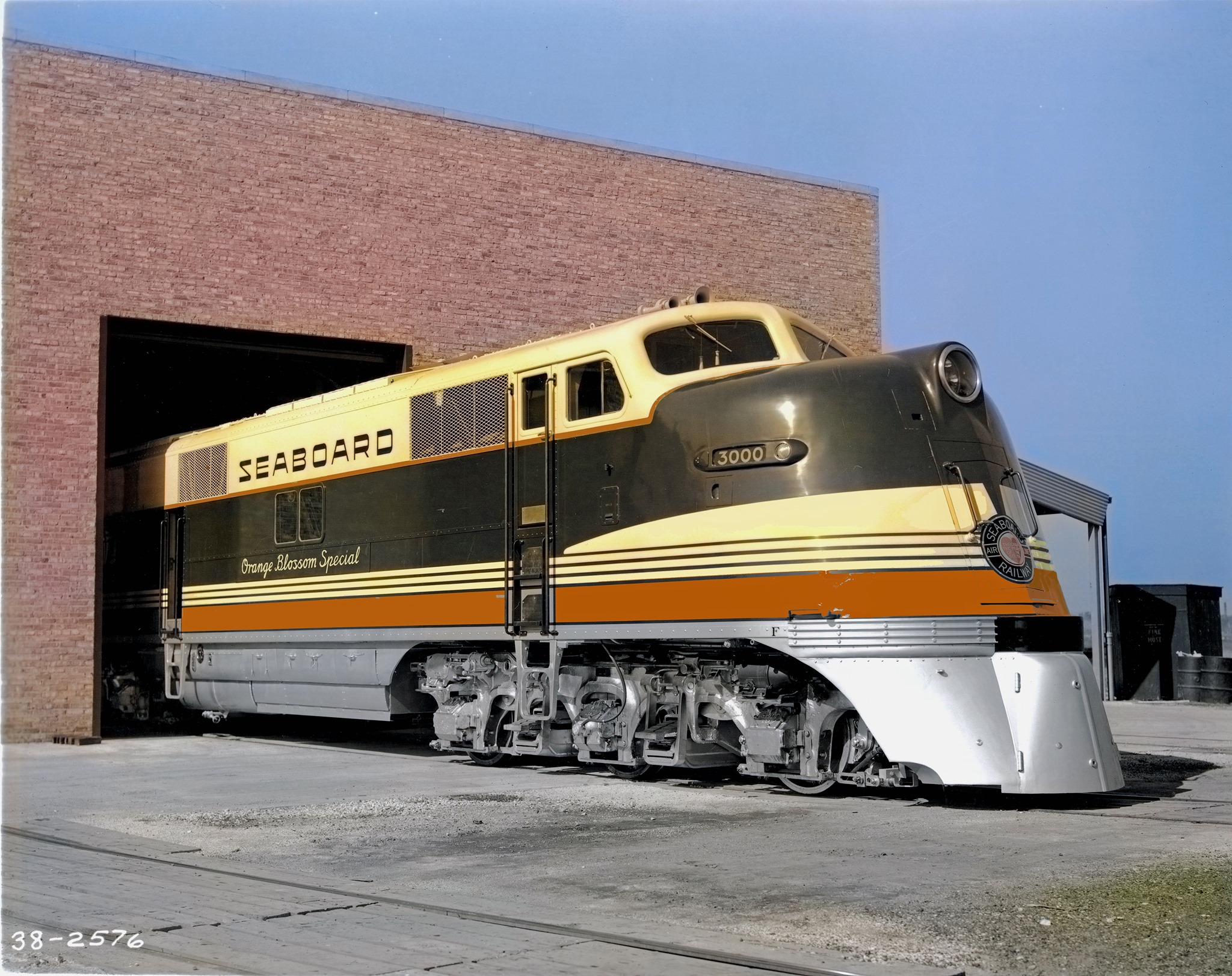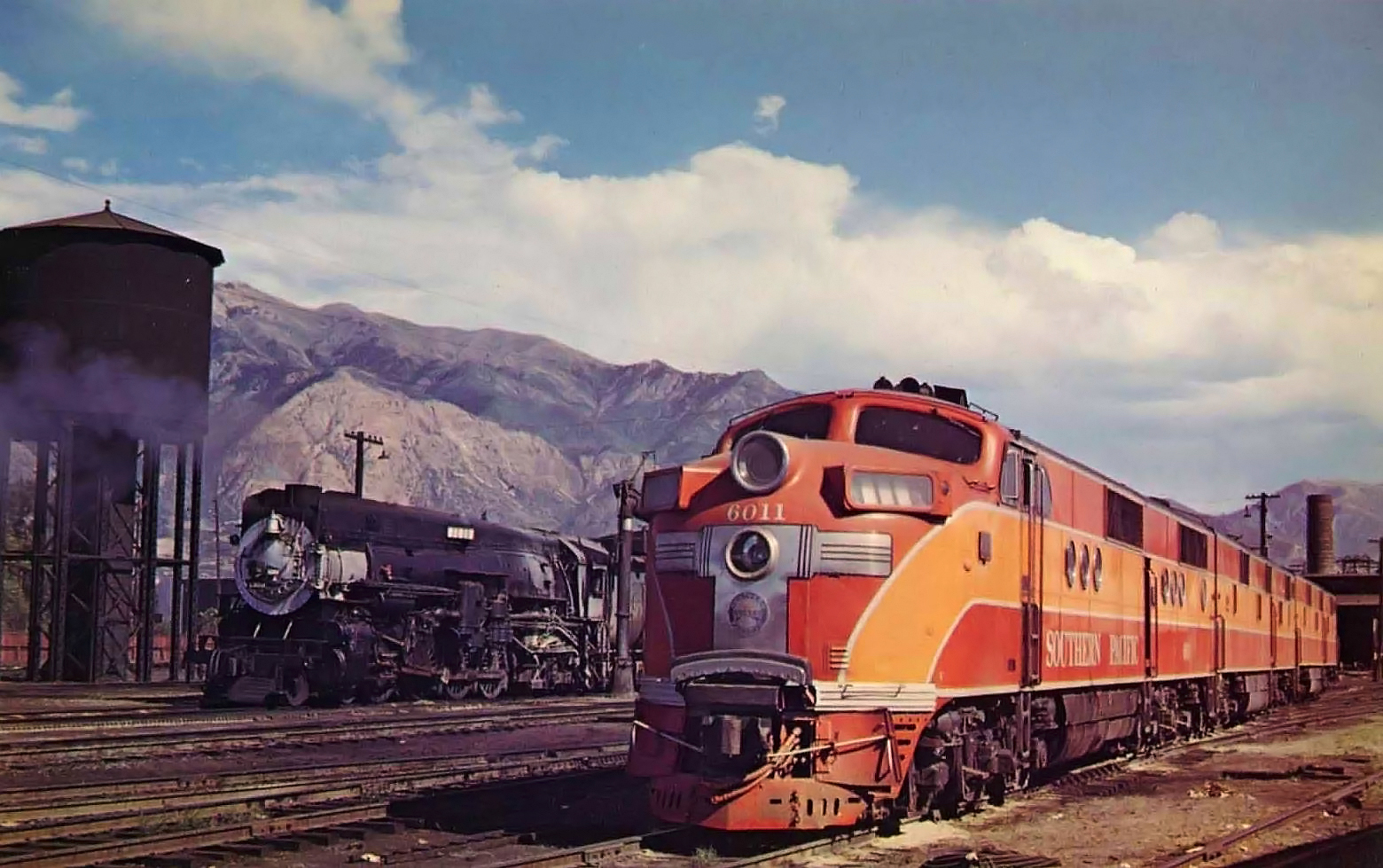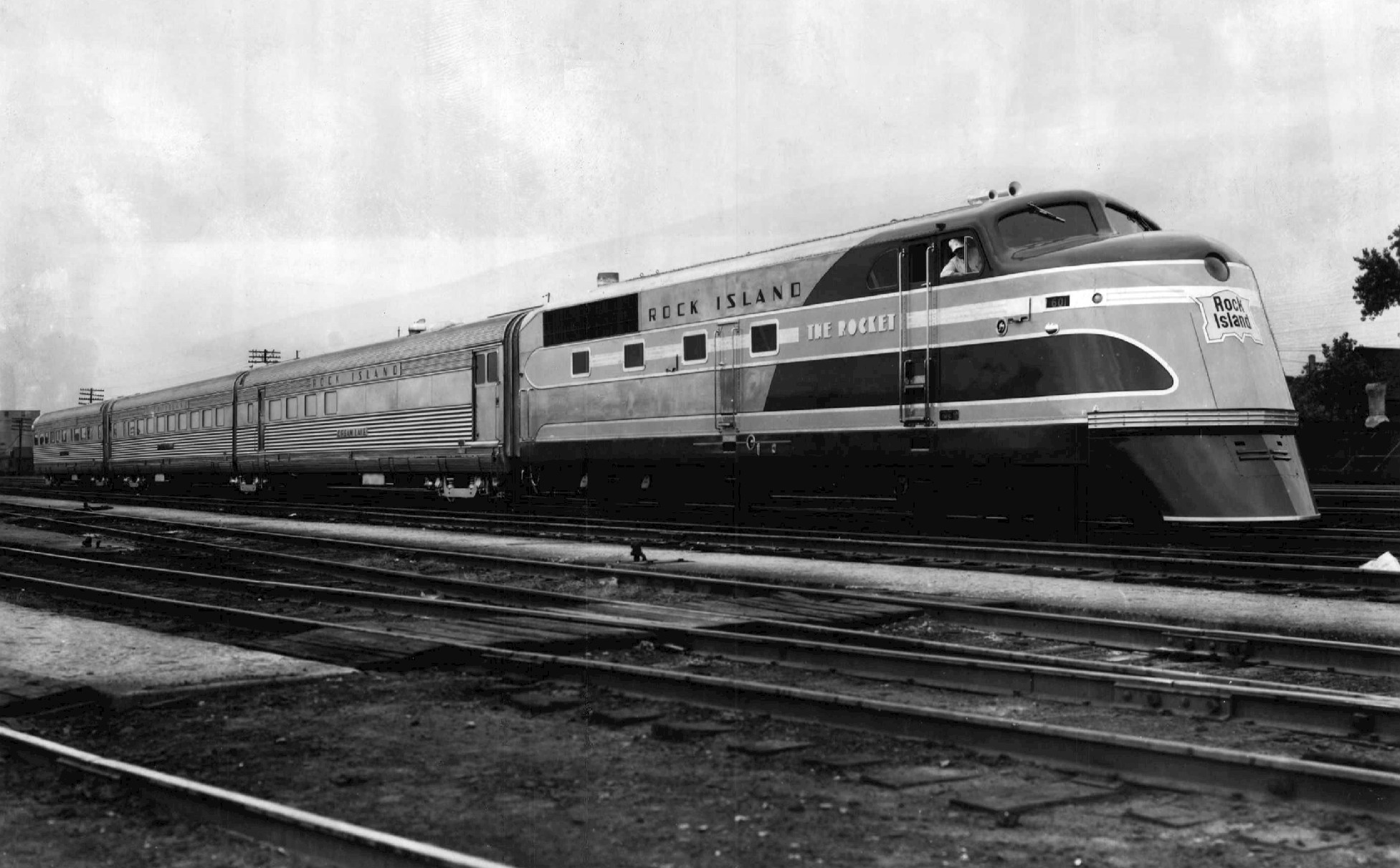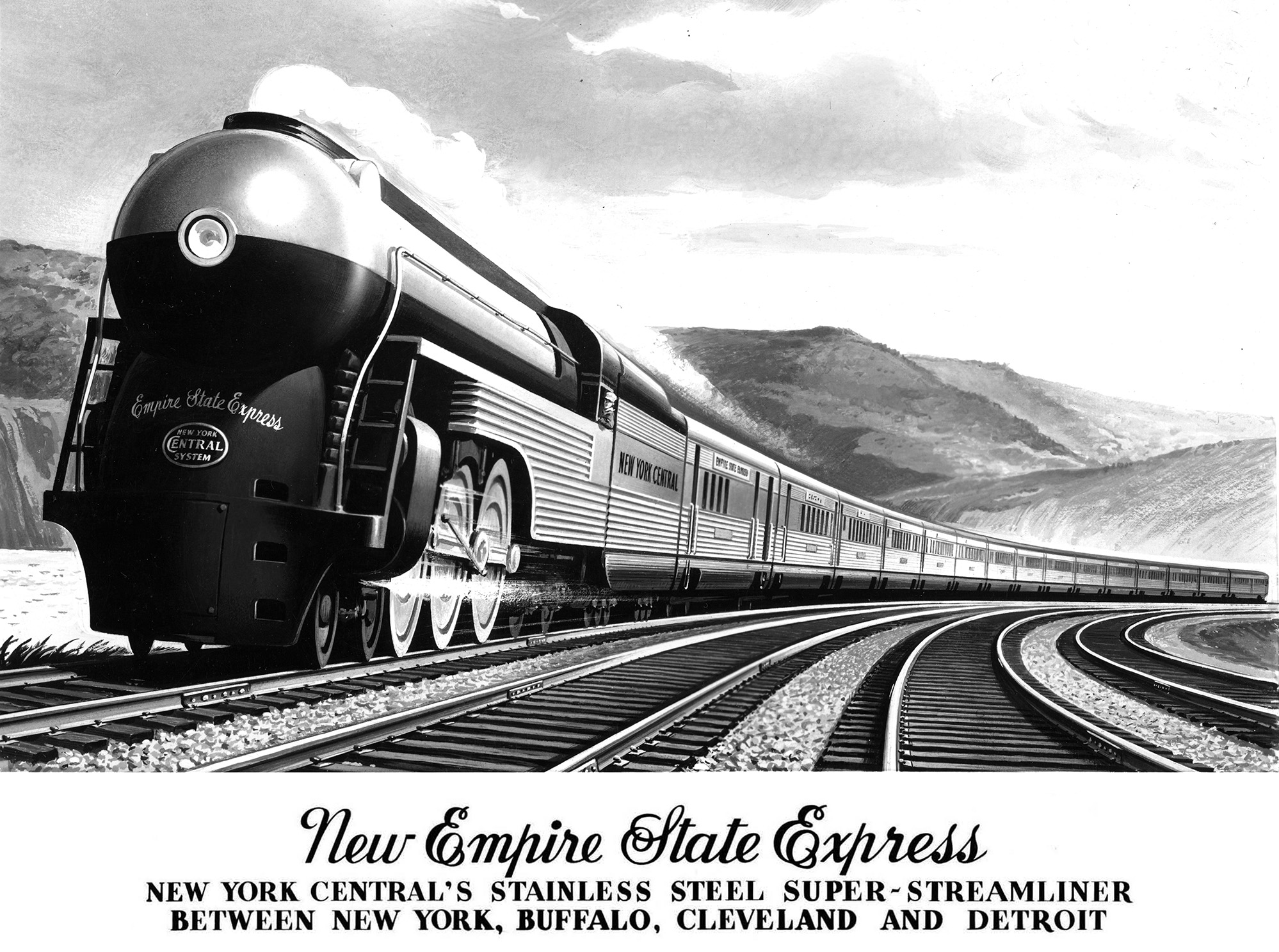Some other intriguing proposed locomotives that were never built:
Santa Fe's 6-4-4-4 streamlined cab-forward duplex. In the mid 1930s, Baldwin (of course) pitched the idea to Santa Fe of a new steam locomotive for the Chicago-L.A. Super Chief. The design had a lot of Baldwin hallmarks of the era, including the Duplex Drive, rotary cam poppet valves, the cab-forward design concept that they had constructed for SP, a 6-wheel truck like the PRR S1 Duplex had, and a streamlined shark-like nose that was very similar to the later Baldwin-Westinghouse E3b electric built for the PRR. Santa Fe and Baldwin corresponded several times on the design, hammering out the details, and then WWII struck. The War Production Board clamped down on new and/or passenger-only designs, and so it was banished to the back burner while they purchased more of their existing 4-8-4 and 2-10-4 designs. During the war, the WPB actually took EMD 567 engines that were allotted for Landing Ship - Tanks and diverted them to produce EMD FTs for the Santa Fe for betweeen Winslow, AZ and Barstow, CA, where water for steam engines had to be brought in. With that, Santa Fe got their first taste of real diesel locomotives, and after the war they fully committed to dieselization, meaning that the Super Chief cab-forward duplex was ultimately stillborn.
Louisville & Nashville 4-8-4. The L&N had stuck with 2-8-2s and 4-6-2s as their largest motive power for years, until WWII began to strain their relatively light and outdated motive power. L&N management really liked the 4-8-4 wheel arrangement based on what they had seen with the J-1 and J-2 "Dixies" on subsidiary Nashville, Chattanooga & St. Louis. But by the time they designed the engine to meet the specifications they required, it was too long to fit in their South Louisville shops. So, to make it fit, they subtracted an axle from the lead truck, resulting in the M-1 class 2-8-4, nicknamed "Big Emmas" and the most expensive Berkshires ever built. They were excellent engines, but supposedly the L&N still had dreams of a 4-8-4 post-WWII, although they instead went the diesel route ultimately. If these L&N 4-8-4s had been built, they would have probably been similar to either the NC&StL J-2s, or the Atlantic Coast Line R-1s (ACL had a controlling interest in L&N at the time).
Minneapolis & St. Louis 2-6-6-4s. During WWII, the M&StL was apparently taking a real hard look at ordering some 2-6-6-4s that were based on the 69" drivered Seaboard Air Line engines that were later sold to the B&O. Some M&StL company publicity materials even showed photos of the SAL version, with lettering touched out. They bought ultimately bought EMD FT diesels instead, meaning the 2-6-6-4 wheel arrangement stayed restricted to only 3 buyers brand new (Pittsburgh & West Virginia, SAL, and N&W)
A 4-cylinder compound Heisler. Not sure if this was ever marketed or there were any blueprints or prospective buyers, but the patents do exist. Heisler was looking at arranging the cylinders like a V-4, with two high-pressure and two low-pressure cylinders. It seems to me like there would be some balancing issues with the two different size cylinders.
Monon 4-10-4. This is a difficult beastie to find any information on, other than that Baldwin pitched such a machine to the Monon. Why a 4-wheel lead and trailing truck? I could see the trailing truck to make a Texas-type, but not really the lead truck. Unless it was planned to be a 3-cylinder engine, and they needed another axle under the nose to support the added weight. But SP and UP both had 3-cylinder 4-10-2s and they didn't need a 4-wheel trailing truck, nor did UP's 3-cylinder 12-coupled engine. The only other solution I can think of was that the Monon was very lightly railed and the added axles were to reduce axle loadings while getting the power of a 2-10-2.
D&RGW narrow-gauge 2-8-8-2. The D&RGW actually had several proposals drawn up for the 3' narrow-gauge 2-8-8-2s. Some were compound, some were single-expansion, some were built from K-36s being cut-up and grafted together, while others were clean sheet designs. D&RGW's decision to try and abandon the narrow gauge lines ultimately led to them deciding just to double- and triplehead K-36s and K-37s rather than spend more money.
D&RGW semi-streamlined 4-6-6-4. In the Charleston Chapter NRHS museum in downtown Charleston, SC, there was an artist’s drawing of a partially streamlined Challenger with roller bearing rods lettered for the D&RGW. Considering how well the Challenger configuration acquitted itself in passenger service on the D&RGW and UP, it's a little surprising that there weren't any streamlined or semi-streamlined Challengers built. It appears this was less a request from D&RGW, and more an effort to drum up sales by Baldwin.
East Broad Top narrow-gauge 2-10-2. Baldwin pitched a narrow-gauge, 44" drivered 2-10-2 to the East Broad Top as the next evolution in power after their superheated Mikados. The blueprints even exist and hinted at a pretty husky machine, but EBT's curvy terrain means that even with blind drivers and lateral-motion devices, it might have struggled. EBT's downturn in fortunes ensured that it would never see production.
New York Central C-1a 4-4-4-4 Duplex. The New York Central marveled at PRR's T1 Duplex from afar and was quite taken with the idea. They went as far as drawing up blueprints for a 4-4-4-4 Duplex, called a C-1a, the basis of which was one of their excellent S-1 Niagaras but with the 8 drivers split into two sets of 4. PRR's less-than-satisfactory experience with the T1s and NYC's move towards dieselization, plus the flawless performance of the S-1 Niagaras, put the brakes on the C-1a.
Lehigh Valley 4-4-6-4 Duplex. A blueprint dated 1945 shows a proposed 4-4-6-4 freight Duplex that has measurements that are remarkably similar to PRR's Q2 4-4-6-4s. This one was a case of bad timing, as new management came in in '48 and openly stated they fully intended to get steam locomotives off the rails as soon as possible. By 1951, the last fire was dropped on the LV. But even ignoring that, this rigid-wheelbase machine would have been much to long for Lehigh Valley's curvy routes. It's hard to imagine where this thing was intended to operate on the LV.
Canadian Pacific had a bunch of designs that they were playing with that ultimately nothing came of. Two of them are of a 4-8-4 Northern and a 4-4-4-4 Duplex. Yes, even north of the border, the Duplex drive siren song could be heard. CP had built a pair of 4-8-2s and a pair of 4-8-4s in the '20s but never gone any further, preferring to stick with Mikados for freight and Hudsons and Pacifics for passenger use. These proposals were post-WWII, leading one to believe that CPR was considering following their competitor's lead of dual-purpose Northerns. There was also a proposal for a Berkshire that used same boiler package as one of their Hudsons (Berkshires were excceedingly rare in Canada, with the TH&B having the only 2), as well as a light branch line 2-6-2 to replace all the older Consolidations and Ten-Wheelers and Pacifics.
Nickel Plate S-4 class 2-8-4. Even after purchasing a batch of their excellent Berkshire fast freight locomotives in 1949, brining their total up to 80 Berkshires, NKP still had dreams of a fourth batch, class S-4. The S-4s would have been largely the same as the earlier classes except for one major change: they wanted to add lightweight rods with roller bearings on the rods as well. NKP management though was more interested in diesels, and even if they hadn't been, by that Lima was out of the steam locomotive-building business (NKP S-3 #779 was Lima's last steam engine).
Erie 2-10-4. Erie was the first one to really perfect the Berkshire design, when they made the step up from the 63" drivers of the earlier Boston & Albany and Illinois Central 2-8-4s to the 69"/70" range, creating a locomotive that could fully take advantage of the huge firebox supported by that 4-wheel trailing truck. The 2-10-4, as pioneered on the Texas & Pacific, was an offshoot of the Berkshire (not the 2-10-2 Santa Fe) with the thinking that "if that firebox can adequately support eight drivers, why not ten?" Erie ultimately decided not to pursue the Texas-type any further, but someone else took the Erie design and ran with it; C&O with their T-1 class 2-10-4s. Evidence of this includes the fact that they were the biggest two-cylinder engines built at the time and didn't fit C&O clearances (Erie had been built as a 6'-gauge railroad originally and so had massive clearances), they were almost mechanically identical to an Erie Berkshire except for the added axle and a slight lengthening of the cylinder stroke, they looked more like an Erie locomotive than anything on the C&O both before and after, and the next class letter for Erie motive power after the S-class Berkshire would have been, yep, you guessed it, T, while C&O's next available letter in their class-naming system was N. Ironically, the Van Sweringen lines of NKP/Pere Marquett/C&O/Wheeling & Lake Erie would then take the T-1 2-10-4 and slice a driver set off to serve as the blueprint for their Berkshires.
Lima had several designs that they threw around in the late era of steam power, trying to find purchasers for as they desperately clung to the past. They included a 4-8-6 with a double Belpaire boiler, a 4-10-6 that Texas & Pacific was rumored to be quite interested in but ultimately passed on (as a subsidiary of MoPac, the T&P dieselized early and fast) and, a monster 2-12-6 that obviously served as the ultimate inspiration for the 2-6-6-6 Alleghenies (Blue Ridge type to Virginian fans). Lima was clearly smitten with the concept of a 6-wheel trailing truck, but it simply arrived too late to turn the tide. There was also a 69" drivered dual-purpose 4-6-4 intended for branch line use, with Lima's W.E. Woodard pushing the idea of it allowing railroads to retire their hodgepodge mix of older power in branch line use and instead have a uniform fleet with identical parts. The problem is, railroads have never been interested in buying new power to service less profitable secondary lines when they have lots of older power sitting around for free.




